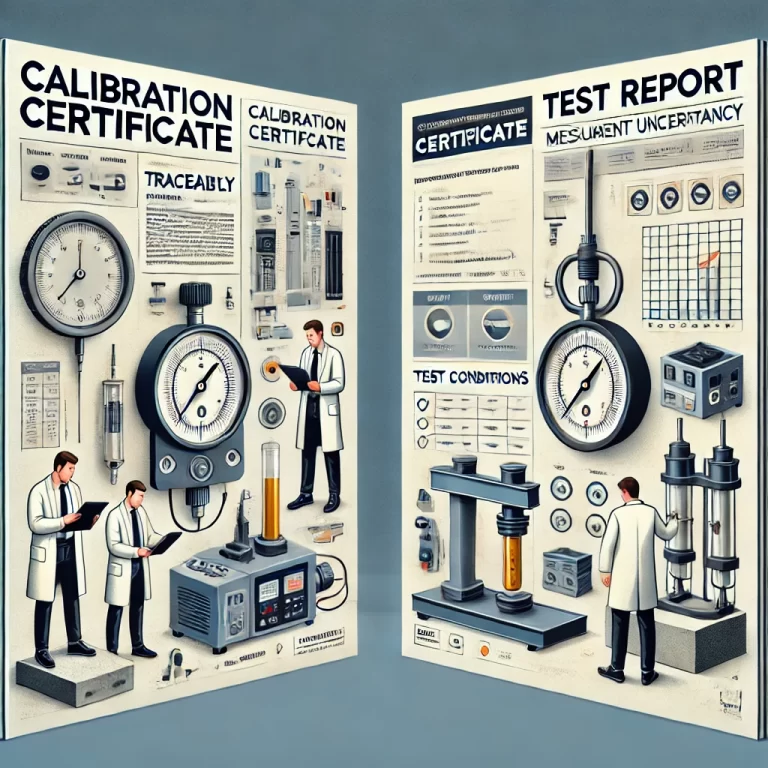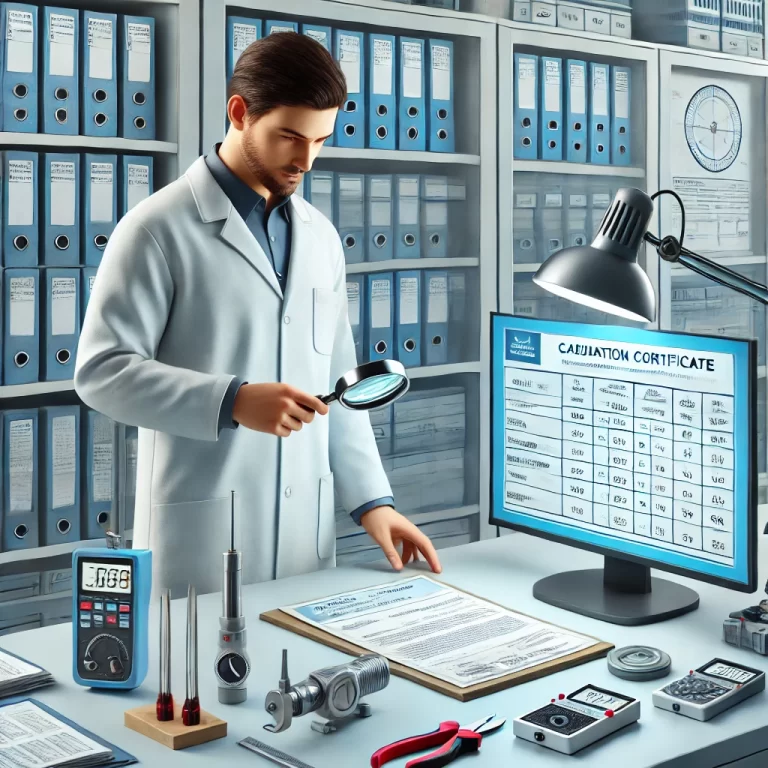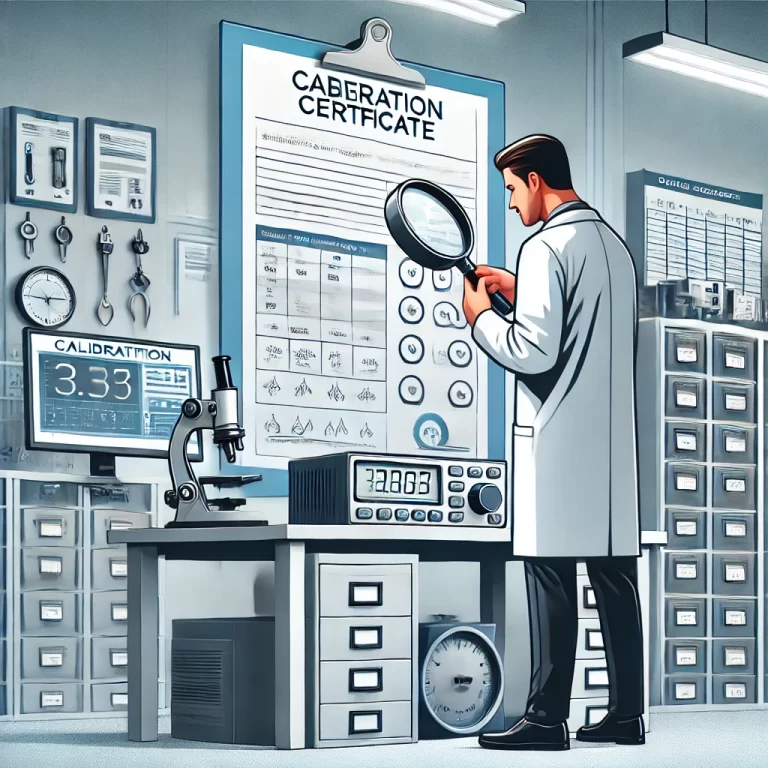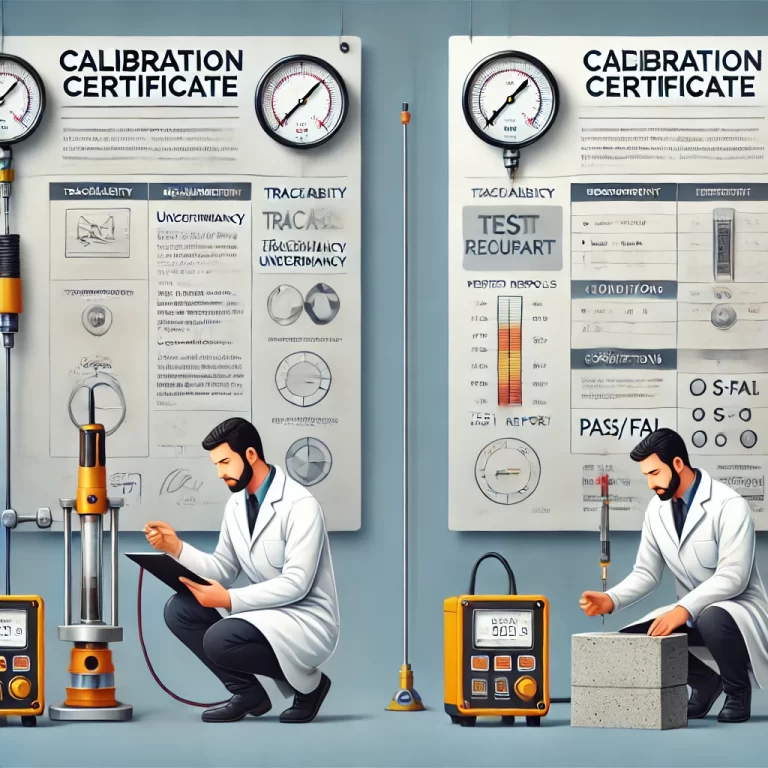In industrial and quality management fields, calibration certificates and test reports are two distinct concepts, each serving different purposes. Understanding their differences is critical for ensuring accurate measurement, product compliance, and maintaining regulatory standards.

1. What is a Calibration Certificate?
A calibration certificate is an official document issued by an accredited calibration laboratory or professional organization. It confirms the accuracy of a measuring instrument by comparing it against national or international standards. Calibration ensures that an instrument’s readings are reliable and traceable to recognized measurement references.
Key characteristics of a calibration certificate include:
Traceability: Results are traceable to national or international measurement standards.
Measurement Uncertainty: The certificate quantifies the potential margin of error.
Standards Compliance: Calibration procedures follow specified technical standards (e.g., ISO/IEC 17025).
Instrument Identification: Clearly specifies the instrument’s serial number and description.
Calibration Results: Includes “as found” and/or “as left” conditions, showing instrument performance before and after adjustment (if any).
Calibration certificates are crucial in sectors where precision is critical, such as:
Medical equipment calibration (e.g., surgical tools, imaging devices)
Food industry measurement controls (e.g., temperature sensors, weighing scales)
Chemical and pharmaceutical process monitoring
Without proper calibration, even the best-designed processes can suffer from inaccurate measurements, leading to compliance risks and safety concerns.

2. What is a Test Report?
A test report is a document that records the results of evaluating a sample, product, or equipment against specific criteria or standards. It assesses whether the tested item meets predetermined requirements, such as regulatory standards, client specifications, or safety norms.
Typical contents of a test report include:
Sample Identification: Information like sample ID, description, and quantity.
Test Conditions: Environmental conditions, equipment used, and methods followed.
Test Methods: Specific procedures referenced by industry or regulatory standards.
Test Results: Measured data, observations, and findings.
Conclusions: Compliance judgment (e.g., “Pass” or “Fail”).
Test reports are widely used in industries such as:
Construction (e.g., concrete strength testing)
Electronics (e.g., EMC/EMI compliance testing)
Pharmaceuticals (e.g., drug safety and efficacy testing)
Environmental monitoring (e.g., water and air quality analysis)
Unlike calibration certificates, test reports focus on the performance or conformance of a product or material, not the measuring capability of an instrument.

3. Key Differences Between Calibration Certificates and Test Reports
| Aspect | Calibration Certificate | Test Report |
|---|---|---|
| Purpose | Confirm measurement accuracy of an instrument | Verify conformity of a product or material |
| Object | Measuring device | Sample, material, product, or system |
| Content Focus | Measurement traceability and uncertainty | Test data and pass/fail conclusions |
| Issuing Body | Accredited calibration laboratory | Accredited testing laboratory or third-party testing body |
| Example | Verifying a pressure gauge’s reading accuracy | Testing concrete samples for compressive strength |
4. When Are Both Documents Needed?
In some cases, both a calibration certificate and a test report are required to ensure accuracy and compliance. For example:
In environmental monitoring, a company may need to:
Calibrate its pollutant detection instruments (e.g., gas analyzers) to ensure measurement precision.
Conduct wastewater tests using calibrated instruments and then issue test reports verifying whether the wastewater meets discharge standards.
Without a valid calibration certificate, the credibility of the test report could be questioned, and compliance risks could arise.

5. Conclusion
Although a calibration certificate and a test report are related in certain applications, they serve distinct roles. Calibration certificates ensure the measurement instruments are accurate and traceable, while test reports verify whether products or materials comply with required standards.
Both documents are indispensable in industries demanding high precision and strict quality control. Understanding their differences helps ensure compliance, safeguard operations, and maintain product and service excellence.
